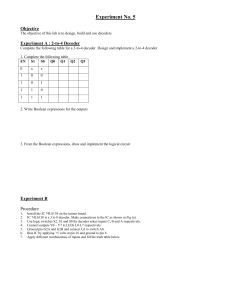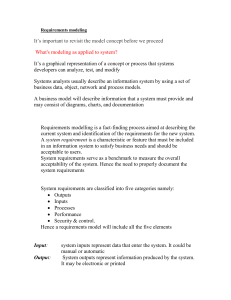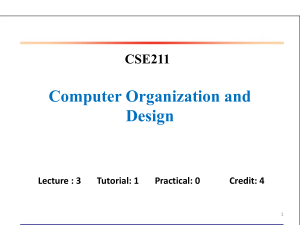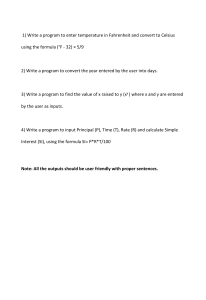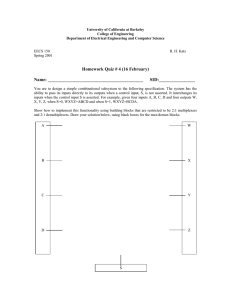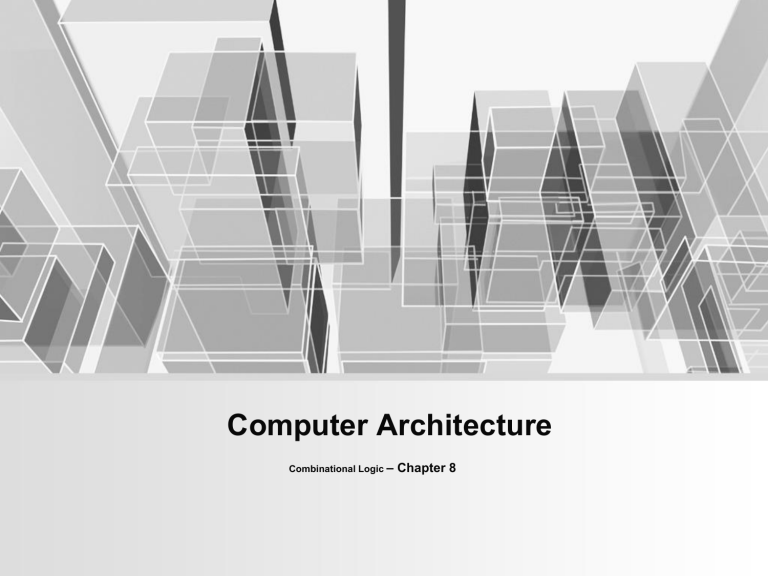
Computer Architecture Combinational Logic – Chapter 8 Decoder - Combinational Logic • A decoder is a logic unit that will be used in the construction of bigger components. The most common sort of decoder has an n-bit input and 2n outputs, with only one output asserted for each pair of inputs. The decoder converts the n-bit input into a signal that corresponds to the n-bit input's binary value. Outputs are often numbered as follows: Out0, Out1,..., Out2n 1. If the input value is i, then Outi is true and all other outputs are false. Figure B.3.1 depicts a 3-bit decoder as well as the truth table. This decoder is known as a 3-to-8 decoder because it has three inputs and eight (23 ) outputs. Multiplexer - Combinational Logic • The multiplexor is a basic logic function that we utilize frequently in Chapter 4. Because its output is one of the inputs picked by a control, a multiplexor is more properly named a selector. Consider the multiplexor with two inputs. Figure B.3.2 indicates that this multiplexor has three inputs: two data values and a selection (or control) value. The value of the selector decides which of the inputs becomes the output. Two-Level Logic and PLAs Combinational Logic • As previously stated, every logic function may be constructed using simply the AND, OR, and NOT operations. In reality, the opposite is true. Any logic function may be represented in a canonical form, in which every input is either true or complemented, and there are only two layers of gates—AND and OR—with a potential inversion on the final output. This type of representation is known as a two-level representation, and it comes in two varieties: sum of products and product of sums.
